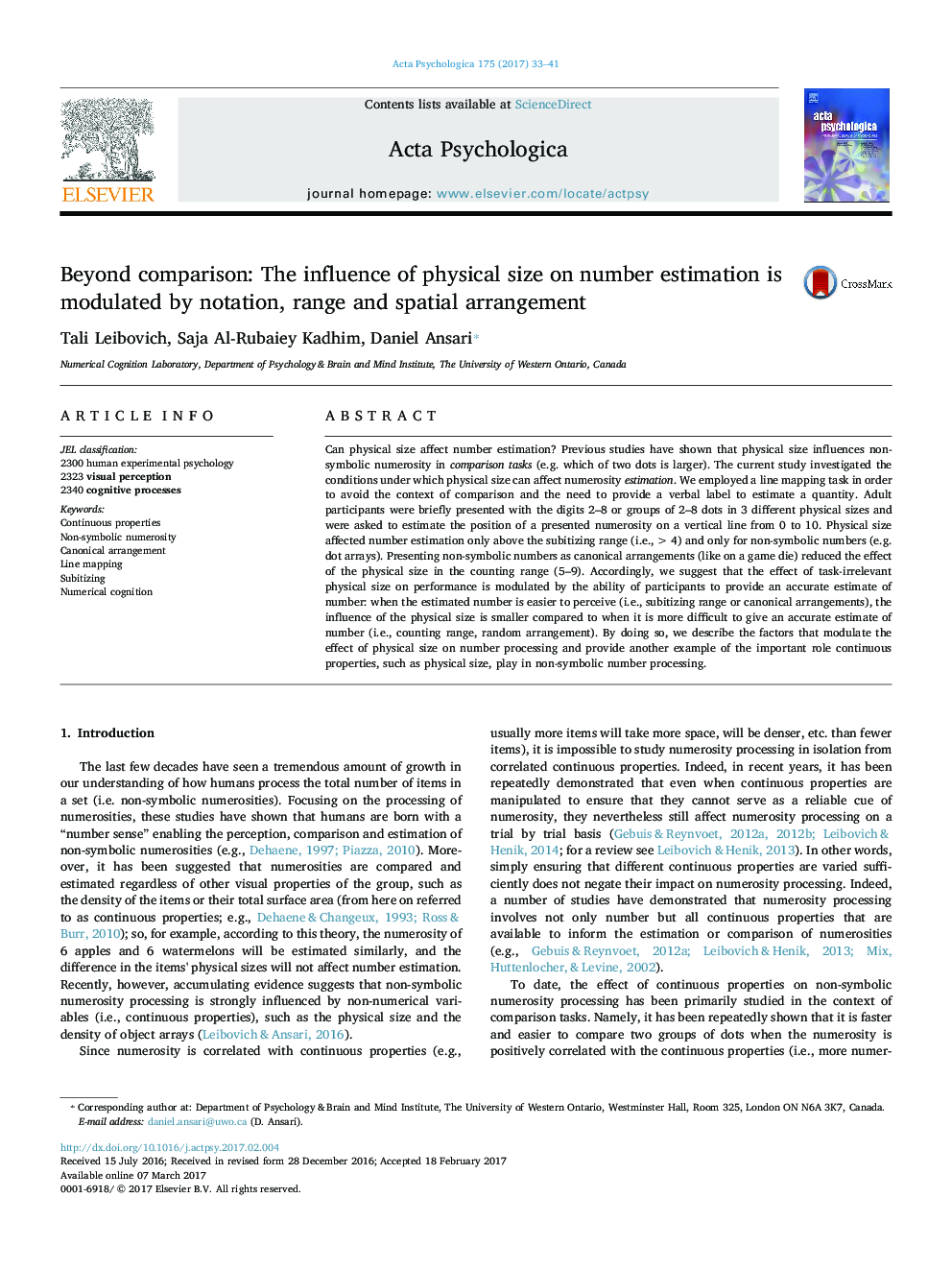| Article ID | Journal | Published Year | Pages | File Type |
|---|---|---|---|---|
| 5040309 | Acta Psychologica | 2017 | 9 Pages |
â¢The influence of size, number and arrangement was tested in a line mapping task.â¢Physical size influenced estimation in numbers > 4, and only in non-symbolic numbers.â¢The number of large size dots was underestimated, and small size- overestimated.â¢Hence, the influence of size on number estimation is task and context dependent.
Can physical size affect number estimation? Previous studies have shown that physical size influences non-symbolic numerosity in comparison tasks (e.g. which of two dots is larger). The current study investigated the conditions under which physical size can affect numerosity estimation. We employed a line mapping task in order to avoid the context of comparison and the need to provide a verbal label to estimate a quantity. Adult participants were briefly presented with the digits 2-8 or groups of 2-8 dots in 3 different physical sizes and were asked to estimate the position of a presented numerosity on a vertical line from 0 to 10. Physical size affected number estimation only above the subitizing range (i.e., >Â 4) and only for non-symbolic numbers (e.g. dot arrays). Presenting non-symbolic numbers as canonical arrangements (like on a game die) reduced the effect of the physical size in the counting range (5-9). Accordingly, we suggest that the effect of task-irrelevant physical size on performance is modulated by the ability of participants to provide an accurate estimate of number: when the estimated number is easier to perceive (i.e., subitizing range or canonical arrangements), the influence of the physical size is smaller compared to when it is more difficult to give an accurate estimate of number (i.e., counting range, random arrangement). By doing so, we describe the factors that modulate the effect of physical size on number processing and provide another example of the important role continuous properties, such as physical size, play in non-symbolic number processing.
